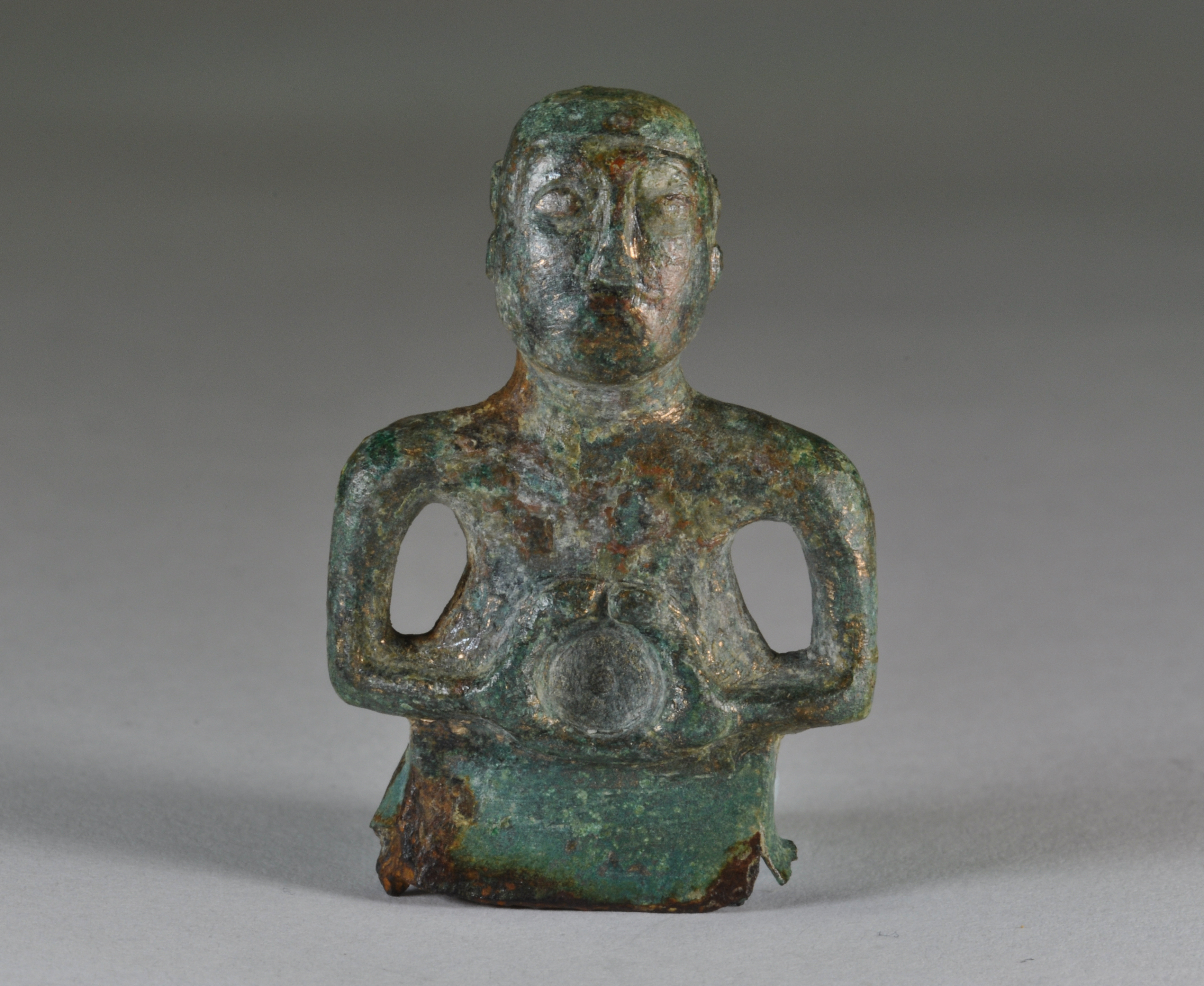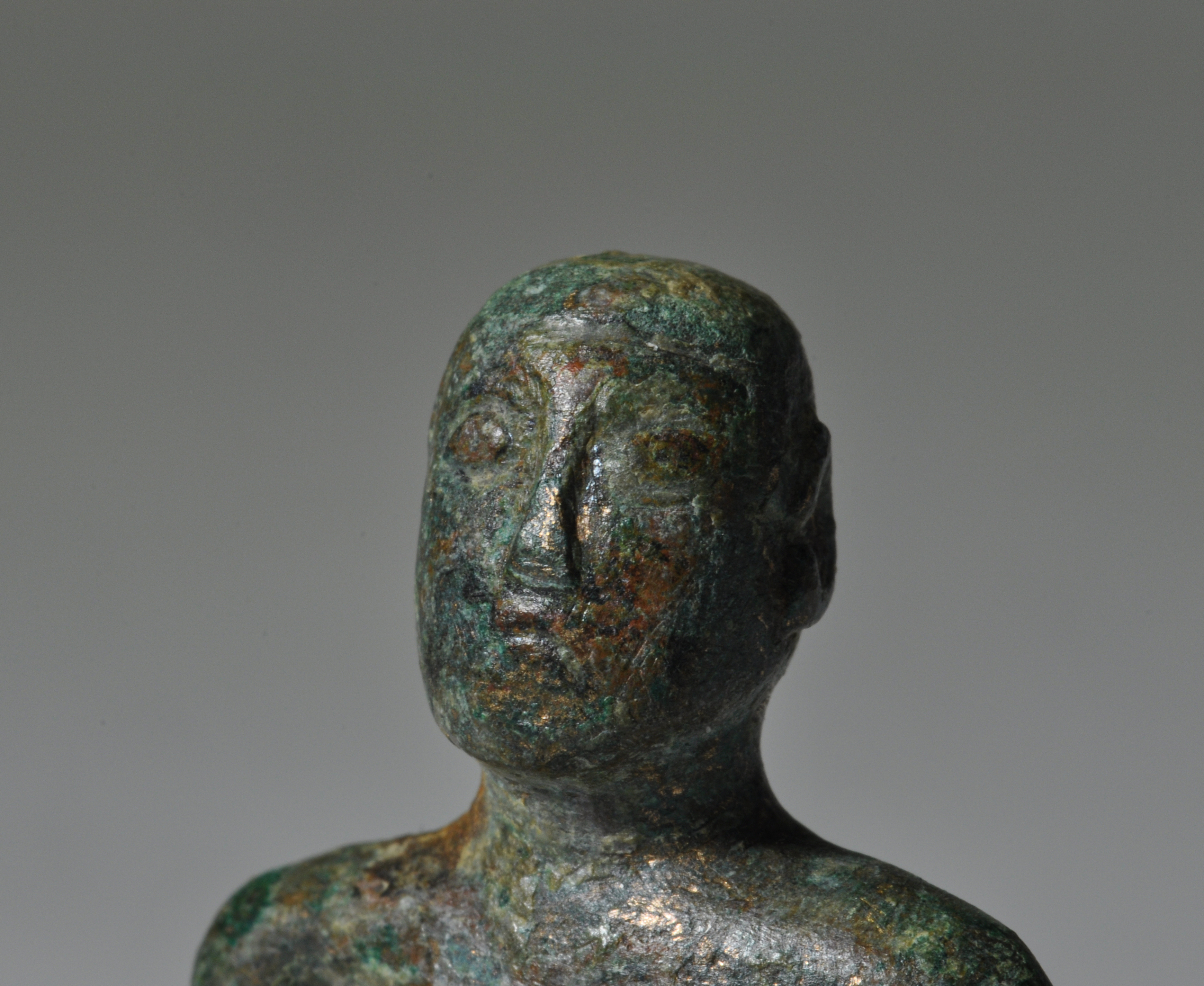A figurine of an unknown Celtic deity found by Oxford Archaeology at the National Trust's Wimpole Estate has been cleaned and conserved, revealing remarkable details in his appearance. OA, National Trust archaeologists and a team of local volunteers investigated the site of a new car park and visitor centre in 2018, revealing a late Iron Age to Early Roman rural settlement.
The 5cm high figurine was one of the most striking finds found at Wimpole in Cambridgeshire, and is a copper alloy human figurine made in the 1st Century AD. Initially, it was suggested that it represented the god 'Cernunnos', the god of fertility, but it is now thought that it could be a Celtic deity that has no recorded likeness.
The figurine was expertly cleaned by OA's specialist conservator, Karen Barker. A tiny moustache is now clearly visible and the figure’s hair, which may represent 1st century trends or how the deity was normally shown, can be seen to be neatly shaped at the front and long but tidy at the back.

Shannon Hogan, National Trust Archaeologist for the East of England, said: “This figure is an exceptional find and thanks to careful conservation and cleaning, we can now see some remarkable detail. His hairstyle and moustache are clear, which might be indicative of current trends or perhaps ‘typical’ for depictions of this particular deity.
“The artefact dates to the 1st century AD, and whilst possibly of Roman manufacture, exhibits very Celtic traits such as his oval eyes. The torc it is holding - an open-ended metal neck ring - is still clear and a small recess at the centre is suggestive of a decorative inlay, now lost.”
The figure probably originally served as the handle of a spatula, perhaps used to mix medicines, or wax to make writing tablets.
Chris Thatcher, from OA's Cambridge office, said: "Finds such as this give a rare and fascinating insight into aesthetics and symbolism in the latest Iron Age. The extent to which his hairstyle is typical of contemporary styles will never be known for certain. However, we think the combination of him holding a torc - associated with status - and forming the handle of a spatula - either used to mix medicines, or wax for writing tablets - speak of influence and power."

It may have been lost or deposited at Wimpole by inhabitants of early Roman Britain at the end of the Iron Age. It is a reminder of the ways in which the Celtic religion shared features with the Roman religion during the Roman occupation of Britain from AD 43 to 410, when both had multiple deities responsible for different aspects of daily life.
The settlement found at Wimpole is believed to have been at the centre of a strong trading network, with imported pottery found as well as around 300 metal objects uncovered during the dig. They included coins, cosmetic implements, horse harness fittings, Roman military uniform fittings, a spearhead, an axe head, key handles, brooches, as well as scrap lead and a number of iron nails.
